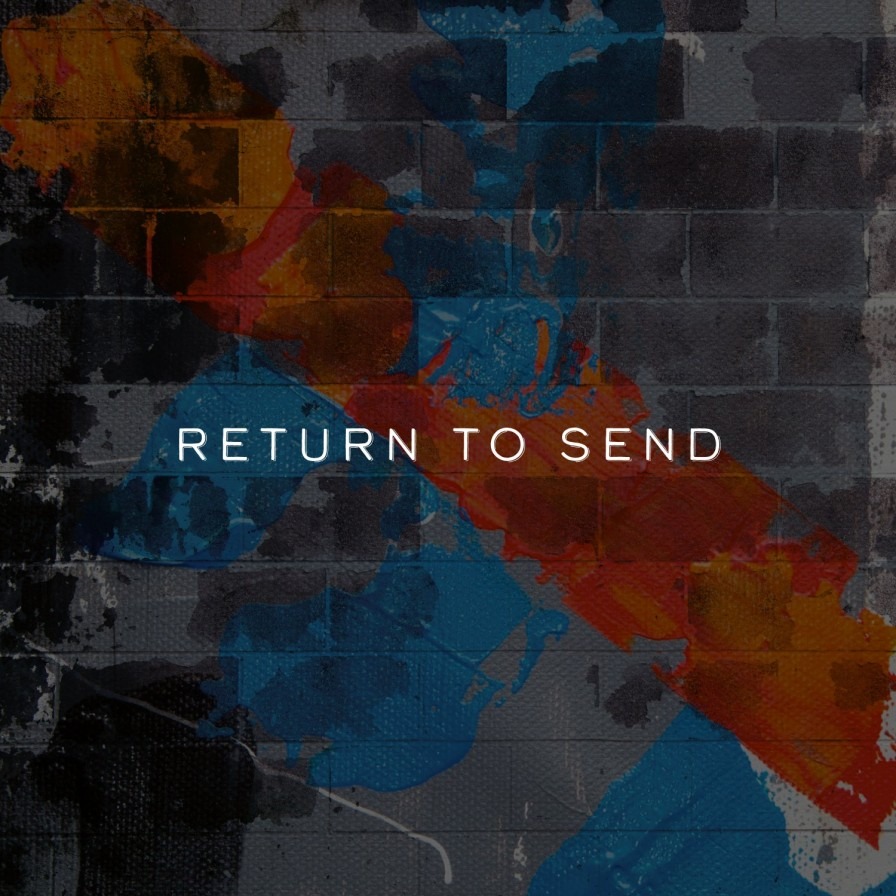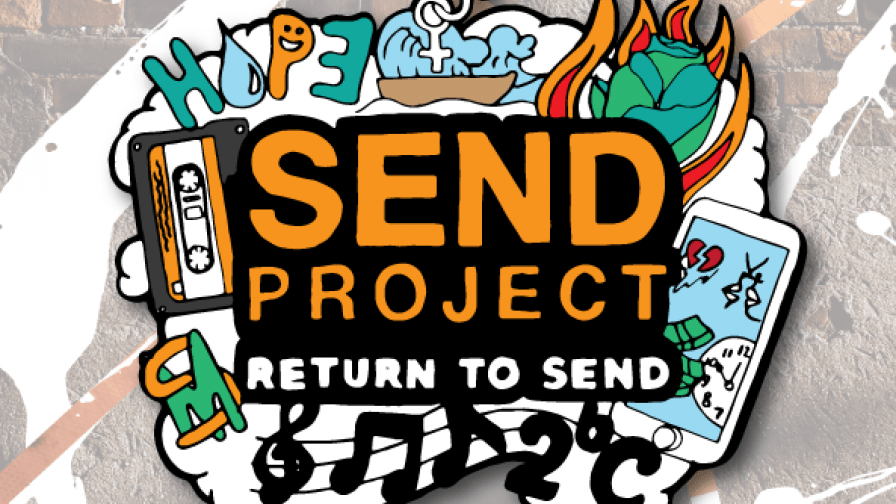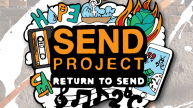Releasing Music

Releasing music has changed over the years and keeping up with the trends is vital to stay current as an artist. Whilst purchasing physical copies of music (i.e. CD’s, Vinyl and Cassette) is a great thing to do, the music industry is now leaning towards selling music via online distribution services such as Spotify and Apple Music. For this reason, we wanted to provide this opportunity for the young people we work with… so that's exactly what we did. We set our young people the task of creating and releasing a 5 track EP that was completely produced, recorded, engineered and mixed by themselves.
In this blog post, we will outline the planning, preparation and execution of making a body of musical work which can later be released via online distribution platforms - with some physical copies for people who still enjoy a tangible product.
Collaboration
Each week, we aim to have a session focus. Whether it's a lyric workshop, audio engineering crash course or live rehearsals - each session is planned to support our participants’ creative goals. On the run up to the EP, the team thought it would be a good idea to run a session on collaboration with an aim of creating a piece of music. During this process, we saw our participants take full ownership of their creative input whilst evidencing true teamwork skills to come to a positive shared outcome with their song. It was really inspiring to see our youngest participant work with one of our eldest to create a strong favourite of ours on the EP ‘Dawn Drive’ - this track was produced by ‘Maugz’ who also features lyrically on the release. Maugz set himself a goal of learning how to produce music using Ableton Live and since learning the basics, he hasn't stopped producing music - Maugz also produced ‘Cold Hearted’ alongside extremely talented all round instrumentalist ‘Tom Fowlkes’. Each track on the EP is a collaboration in some way and we found that facilitating workshops that require our participants to work together, breeds a relaxing and friendly environment in the studio
Return To Send
Whilst creating songs, it was important to consider the actual name of the EP and explore the different branding options they had available to us. As we know an extremely talented graphic designer (Elliott), it was only right for him to lead a session on branding an idea. Elliott works with a variety of clients but has had extensive experience working with musicians to brand bodies of work so he created a session to draw ideas from our participants. During the session, one of our participants said “Why don’t we call it return To send” and went on to explain that that’s what they do each week, return to SEND to create music and explore creatively - so it stuck!
Now the name was sorted, it was important to have artwork for the online distributor. What we didn't realise is that there are certain guidelines to adhere to regarding the text. Our young people created a group mural with various pieces of text and images to use for the artwork (pictured above) but this was declined by the distribution website as you can only have the name of the EP on the artwork - back to the drawing board. In the end, we created a well rounded, current EP cover which is pictured below.
Production process
At SEND we use Ableton Live and Reason to create music digitally. Understanding the basic functions of a DAW (Digital Audio Workstation) can bridge the gap between thinking of ideas and being able to get them down quickly. Our lead mentor Gaz will often run workshops on the various areas of music production with a focus on learning the basics like working with premade audio loops and midi files. For the EP, we wanted our participants to have as much involvement in the production process as possible and since then, various young people have identified this as a creative area they wish to learn more about. We always advise our participants to source music responsibly when recording to avoid any copyright strikes when they share online - this is especially important if submitting music to distribute online which we will cover later. We are proud to say that the EP is 100% original material from the lyrics to the backing tracks!
Writing Process / Concepts
This process was completely organised by our young people - we wanted to empower our participants to write about something that is meaningful to them. The first track on the EP is by AKADEEKAY & Maugz and the track is called ‘Paid in Full’. The song is about moving forward with creative goals, eventually getting paid from music and turning bad situations into good. The vibe of the track is extremely uplifting and the chorus is very catchy (this song was later picked up by the BBC which we will talk about a bit further down). Track 4, ‘Catch A Vibe’ by Carrz, IZO, Maugz & AKADEEKAY has a similar feeling with a catchy hook. This track was made during one of our Tuesday ‘Sound & Vision’ sessions and the writing process was quick and enjoyable to see. Carrz came up with the chorus and wanted to record it straight away, once the other guys heard it, they immediately wanted to jump on the track and it was born. Witnessing that spark in the studio is very inspiring and we encourage our participants to act on those moments of excitement as this is what creating music is about - catching a vibe!
Recording
The process of recording can be daunting for an artist who has not yet experienced it before, so for that reason, it's important to create a supportive and friendly environment in the studio. We’ve found that, if you have a young person who is genuinely nervous about recording in front of people, the best thing to do is to clear the room for 20 minutes to half an hour. This provides a quiet and less pressurised environment for the artist to make mistakes or work through the recording process. Throughout the process of recording the EP, it was vital for us to capture the best recording because after all, this is being released to the world! Creating a safe space for new artists is vital to combatting the nerves that come with recording - It's also important for mentors to exercise good communication skills and let the artist know about certain processes i.e. recording backing vocals etc. Since recording the EP, we have found that our more quiet participants are now relishing the opportunity to record and each time they jump in the vocal booth, the songs get better and better - Repetition is definitely the key here.
Mixing
Mixing the songs for the EP was done pretty much after the recording was captured as this is a good time for the artist to have an input on the type of effects the engineer is using. With words like ‘Compression’ and ‘EQ’, it's quite easy to get confused as to what these effects do so in our experience, its best to extend the mixing practice to 1-1 teaching if the young person is interested - talking about compression ratios and threshold values isn't the most exciting thing if you just want to record a song.
Once a recording has been captured, we like to apply compression, EQ and then any warming effects like saturation to give a natural and less digital sounding recording. Once the audio is sounding good, we explore applying effects like reverb and delay to give the recording character and depth;. When mixing the EP, each participant had an input on how their voice should sound but throughout this process, they were asked to keep in mind the cohesion between artists - after all, all tracks were collaboration so you wouldn't want someone sounding like they are rapping in a church on verse one to someone rapping in a tight vocal booth on verse 2. A good tip is to apply the same reverb settings to all vocal takes in one track. This way, the reverb glues the vocal takes together and gives a more cohesive finished product. Once the song is mixed, it's time to create a ‘pre master’.
Mastering - Pre master / reviewing masters
Creating a well-balanced pre master is one of the most important things about mixing. Once all the sounds are mixed, it's important to make sure nothing is distorting and you have a decent amount of headroom - this is what the mastering engineer needs to do a good job. Whilst most people associate audio mastering as making the song louder, it's also about making the song more tonally balanced in terms of frequency - so it translates well on various systems (car, headphones, laptop etc.) - but let's not get into the boring stuff… It was important for our participants to understand this throughout the recording process, let's get the best recording and then we can create a good mix. Once the song is mixed and the loudest peak is no more than -3dB, it can be sent to master. For the mastering, we used White Peach who are based in London. Their rates are outstanding, you receive 2 different masters (both Spotify ready) and the turnaround is no more than a week.
When the masters came back, we held a listening session and compared them against the pre masters - it was great to see our participants receive a mastered song which was now ready to be distributed on the net...
Digital Distribution
A huge part of preparing music for release is making sure the audio and artwork complies with the online distributors’ rules and regulations. For example, a common trend for recording artists is for them to find an instrumental off YouTube and record directly over the top of it. This is all well and good for practice however, if that artist chooses to release that song, they may get copyright strikes against them on that chosen platform (i.e. Facebook, Instagram and Soundcloud). This is one reason why we wanted to create everything from scratch in terms of the backing tracks. With this said, if you have a young person who doesn't have access to bespoke backing tracks, you can search ‘free for profit instrumentals’ on YouTube. These backing tracks are free to use and you won’t stumble across any copyright issues if choosing to release on the internet.
For the actual distribution, we used a website called ‘Ditto’ - it costs £20 per year and allows for unlimited uploads. When uploading the music, it’s important to ensure all the artist names are entered correctly along with the track names and featured artists. Once all the information has been entered, you can now select the release date. One thing to bear in mind: on the £20 a year membership, you have to upload music and artwork at least a month prior to release date - this gives you a solid period of time to start promotion...
Promotion
The best form of promotion is the young people you work with! With apps like Instagram and Facebook, it's becoming increasingly easier to share content to a lot of people. We set up an Instagram account a little more than a year ago and we find it's a really good way to connect with our participants as most of them have accounts. We started by posting the artwork with details of the release along with the featured artists with links to their artists social media pages - this is always a good way to give exposure to the artists you work with. Whilst the artwork post was being reshared, we submitted the EP to a local music platform called ‘Nusic’. Their aim is to showcase local Nottingham talent and provide a platform for their music in the form of a monthly podcast that has a great online following. We received an email from them a week or so after saying they were going to feature a track in their next ‘Nusic New Music Podcast’ - the track they featured was ‘On Time’ by Carrz, IZO, Maugz & AKADEKAY and the link to the podcast is below.
http://www.nusic.org.uk/wordpress/nusic-new-music-podcast-219-275-trackl...
The Nusic feature was a great opportunity for the artists we work with so it’s definitely a good idea to find out if there are similar platforms in your local area. Another great platform for artists is ‘BBC Introducing’ where you can set up a profile and submit 2 tracks every month. A long time attendee AKADEEKAY submitted two tracks from the mixtape and we were lucky enough to feature on Dean Jackson’s ‘The Beat’ show on BBC Nottingham. All of these achievements were shared on our social media platforms and this allowed for resharing; resharing = promotion.
On the week of the run up to release, we wanted to hit the promotion hard and create a good buzz for when the EP drops so we posted every day on the lead with teasers of the different tracks and we planned a launch party at Rough Trade Nottingham (we have a separate blog post for this coming up next). The launch party was a public event and was a great opportunity to perform the EP whilst providing that opportunity for artists to network. Because we wanted to cater to the people who still like a physical product with their music, we created a personalised USB stick with the EP on it. We created a personalised envelope with the artwork and tracklist because, after all, the EP is called “Return To SEND”. Having a physical product is also a great promotion tool, we wanted to make up CD’s but we soon realised that most modern day laptops don't have a disc drive and CD players aren't really a thing anymore.
We were really happy and inspired to see our participants' music being picked up by local musical platforms and off the back of that, it's so worth sending music to various links you may have in the local scene. The EP has been such a positive process in terms of development for our participants. Not only has it provided an opportunity to release music to the masses, it has also refined their craft and other areas of music they may not have experienced have been explored.
We would love to hear if you have any experience of releasing music, any suggestions on promotion or even a question for us? Feel free to drop us a comment/message but in the meantime, Return To SEND is available to stream on all major platforms (link below).
https://album.link/s/2wQ2rzcHb1V9vZZAM08I4a



